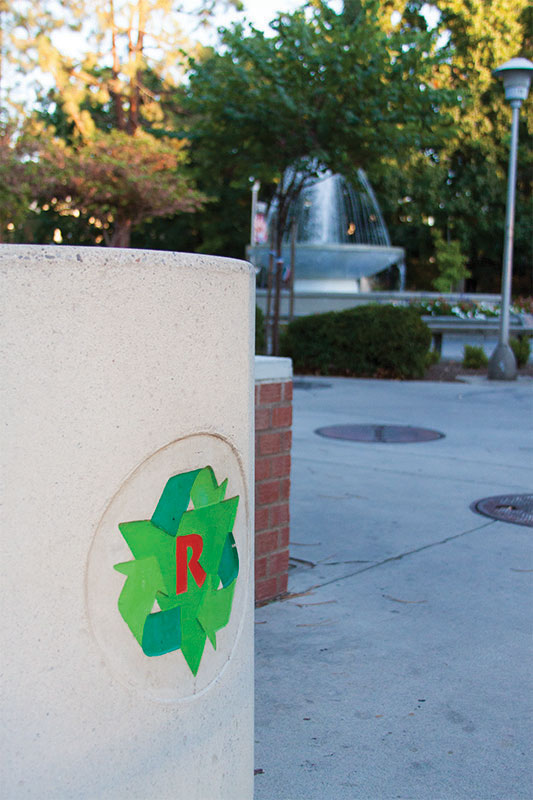
The days when people had to sort recyclables by hand are long gone at Fresno State, said Lisa Kao, who manages the Office of Environmental Health and Safety, Risk Management and Sustainability on campus.
Kao said that all of the trash in buildings across campus is collected and treated as recyclable, with the exception of a few buildings. Buildings such as the dorms, the Student Recreation Center, Residence Dining Hall, University Student Union and the Satellite Student Union have blue recycling containers.
The blue recycling containers were introduced to the campus in May, Kao said. These containers are not controlled by Auxiliary Services, which are nonprofit public entities that provide services on campus.
“It doesn’t matter what it is, it all goes into a co-mingled dumpster, which means it will be sorted,” Kao explained of the recycling process. She said there is no need for sub-sorting because there are waste handlers to do that job.
Kao said a student assistant was employed by her department to go around campus and pick up only the recycled paper products in non-auxiliary buildings, but the introduction of this recycling system deemed such a position unnecessary.
“We like that we don’t have to worry about sub-sorting anymore because it doesn’t matter what it is, it all goes into the dumpster and then gets sorted off-campus,” Kao said.
Custodians empty the trash bins inside the buildings while grounds maintenance workers empty the outdoor trash, Kao said. Waste is picked up every day, Monday through Friday, and is taken to the Cedar Avenue Recycling and Transfer Station (CARTS).
The process is partially mechanized and partially sorted by hand, Kao said.
The campus has a contract with Industrial Waste and Salvage (IWS), which is a business dedicated to recycling and disposal of construction and demolition materials, as well as commercial waste. The company’s trucks pick up the dumpsters from around campus and transport the waste to the CARTS facility.
Students may not be aware of how much work the recycling process is, Kao said. “It’s a difficult job to do,” she said.
Kao said that students and community members alike can also make the decision to produce less waste.
Many people also do not realize how much more energy is required when a recycling plan is not implemented, Kao said. Energy is required to transform a plastic water bottle into plain plastic, then further energy to create a more sustainable and eco-friendly product, she said.
“The important thing to ask is how can we minimize the waste we create?” Kao said. “Think of it as more than just recycling. Think about how much less waste we would produce and create if we just bought less packaging.”




